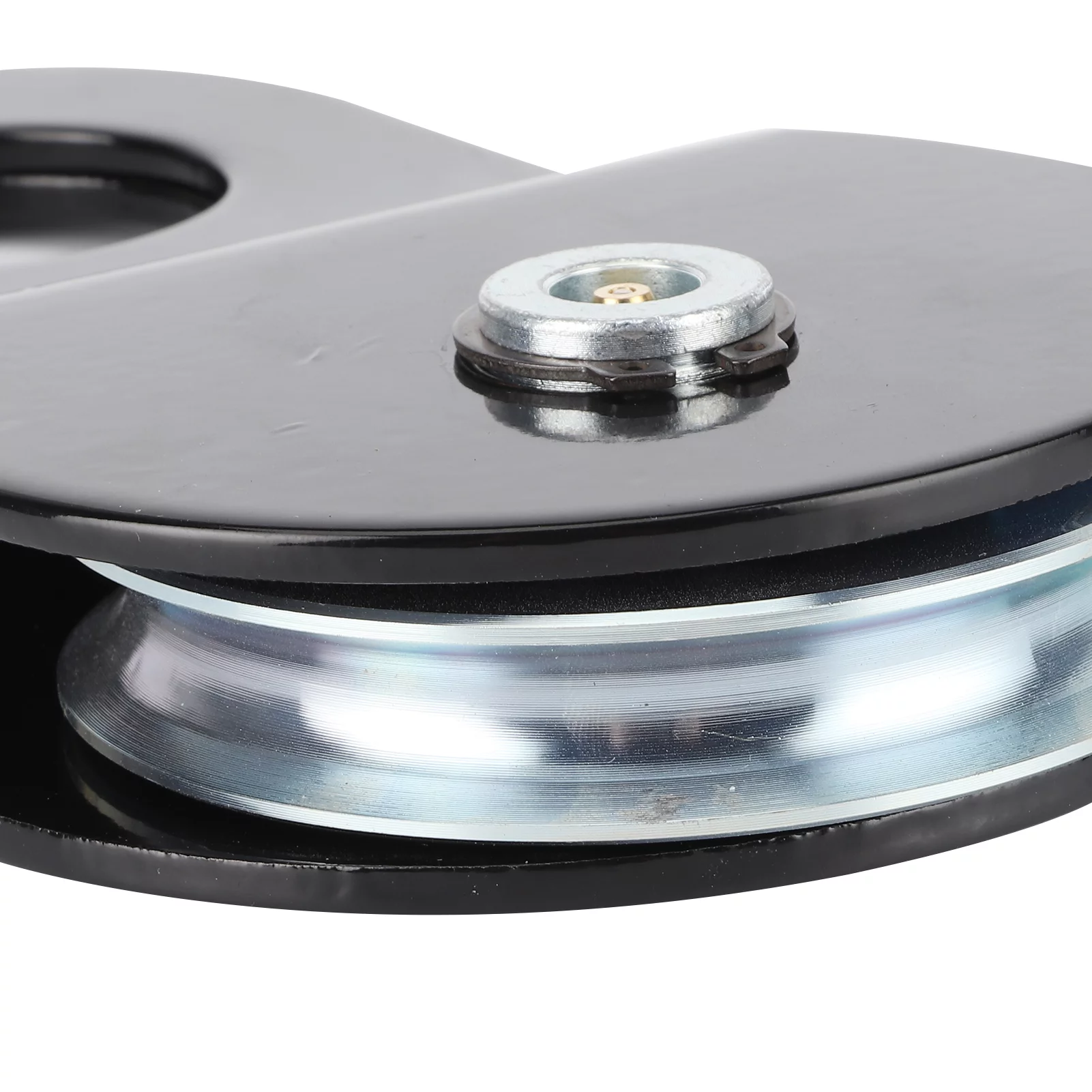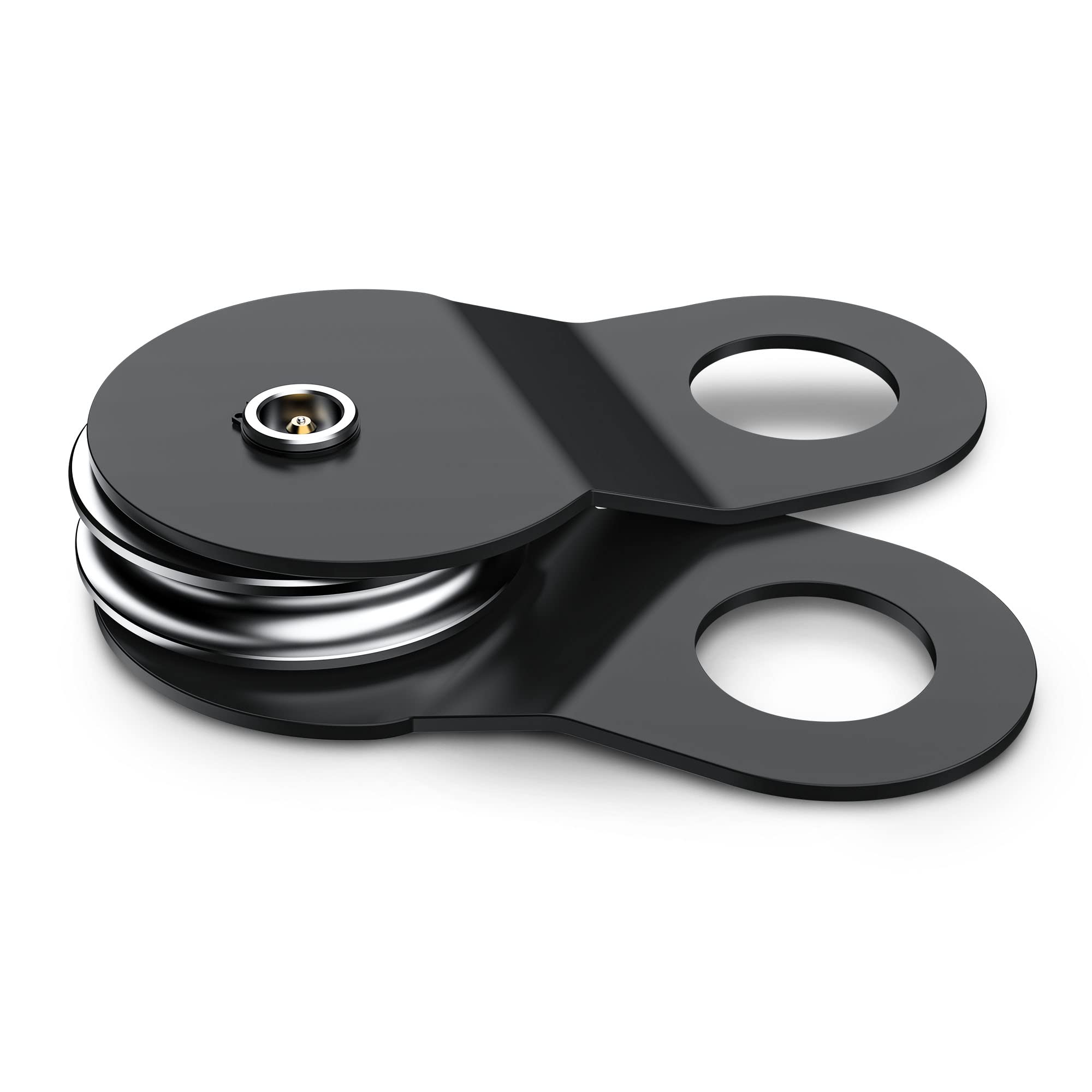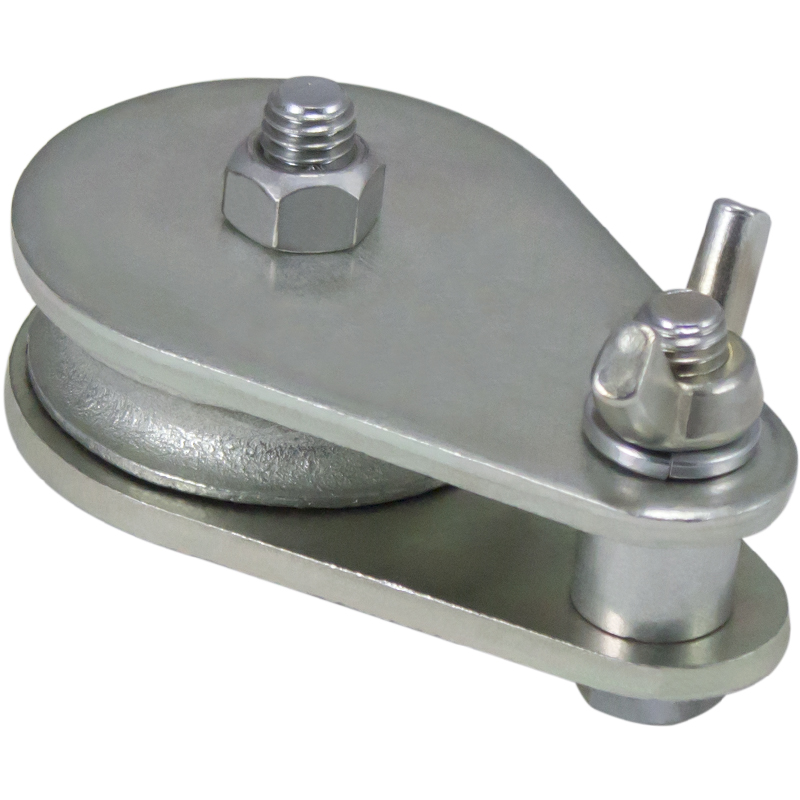Product Description
Double sheave winch crane lifting snatch pulley wheel pulley block
With winch, anchor machine, marine crane and other use, multiply the tension, save costs.
The sheave block can be designed and produced according to the actual needs of the customer, such as tonnage
and wire rope diameter.
The sheave is manufactured according to the diameter of the wire rope and is formed directly by hot rolling process,
making the sliding wheel stronger and lubricated with grease, making it safer in use and having a longer service life
The sheave block can be tested according to the needs of CCS, to provide customers with assured quality and service.
| Model | Rate capacity | Dia. of wire rope | Basic parameter | |||
| D | B | L | H | |||
| D3 | 125 | 15.5 | 200 | 250 | 188 | 546 |
| 200 | 19.5 | 250 | 310 | 208 | 673 | |
| 250 | 21.5 | 285 | 350 | 238 | 744 | |
| 300 | 26.0 | 335 | 410 | 264 | 866 | |
| 400 | 28.0 | 365 | 455 | 290 | 970 | |
| 500 | 32.5 | 420 | 520 | 308 | 1095 | |
| D4 | 250 | 19.5 | 250 | 310 | 264 | 663 |
| 320 | 21.5 | 285 | 350 | 302 | 750 | |
| 400 | 26.0 | 335 | 410 | 335 | 900 | |
| 500 | 28.0 | 365 | 455 | 368 | 1005 | |
| 630 | 32.5 | 400 | 520 | 392 | 1131 | |
| 800 | 34.5 | 450 | 550 | 425 | 1248 | |
/* March 10, 2571 17:59:20 */!function(){function s(e,r){var a,o={};try{e&&e.split(",").forEach(function(e,t){e&&(a=e.match(/(.*?):(.*)$/))&&1
| Type: | Pulley Block |
|---|---|
| Material: | Stainless Steel |
| Number of sheaves: | 4 |
| Control: | Manual |
| Color: | Red or Yellow |
| Application: | Double Beam Crane, Gantry Crane, Bridge Crane, Tower Crane, Single Grinder Crane, Lifting Platform, Boat |
| Customization: |
Available
| Customized Request |
|---|

Can winch pulleys be part of rescue and emergency response systems?
Yes, winch pulleys can be an essential component of rescue and emergency response systems. Here is a detailed explanation:
Rescue and emergency response systems often require reliable and efficient equipment to perform various tasks, such as lifting, lowering, or evacuating individuals in hazardous situations. Winch pulleys can be integrated into these systems to enhance their capabilities and contribute to successful rescue operations in the following ways:
- Lifting and Lowering: Winch pulleys enable controlled lifting and lowering of individuals or objects during rescue operations. By incorporating winch pulleys into the system, rescuers can change the direction of force applied to the load, providing the necessary mechanical advantage to lift or lower individuals safely. Winch pulleys distribute the load evenly, minimizing the effort required and ensuring smooth and controlled movement.
- High Load Capacity: Winch pulleys are designed to handle heavy loads, making them suitable for rescue and emergency response situations. They can be integrated into systems that require lifting or lowering individuals who may be injured or incapacitated. The high load capacity of winch pulleys ensures that rescue operations can be performed safely and efficiently, even in challenging circumstances.
- Change of Direction: Winch pulleys allow the cables or ropes to change direction, facilitating access to individuals in difficult-to-reach or confined spaces. In rescue scenarios, where individuals may be trapped in elevated areas, steep slopes, or other challenging locations, winch pulleys enable rescuers to redirect the force and safely reach the individuals in need. The ability to change the direction of force enhances the versatility and effectiveness of rescue operations.
- Increased Control: Winch pulleys provide rescuers with greater control over the lifting or lowering process. They allow for precise and gradual movement, enabling rescuers to navigate obstacles, adjust positioning, or perform delicate maneuvers during rescue operations. The controlled movement facilitated by winch pulleys enhances the safety of both the rescuers and the individuals being rescued.
- Evacuation Systems: Winch pulleys can be integrated into evacuation systems used in emergency response scenarios. For example, in situations where individuals need to be quickly and safely evacuated from high-rise buildings, winch pulleys can be part of the system that lowers individuals down the building using ropes or cables. This ensures a controlled descent and efficient evacuation of individuals in emergency situations.
- Remote Access: Winch pulleys can be used in conjunction with remote-controlled systems to perform rescues in hazardous or inaccessible areas. This allows rescuers to operate the winch pulleys from a safe distance and maneuver individuals or objects to safety without putting themselves at risk. Remote access capabilities provided by winch pulleys enhance the safety and effectiveness of rescue and emergency response operations.
The integration of winch pulleys into rescue and emergency response systems enhances their capabilities by enabling controlled lifting and lowering, providing high load capacity, facilitating change of direction, ensuring increased control, supporting evacuation systems, and allowing for remote access. These features make winch pulleys valuable components in rescue equipment, contributing to the success and safety of rescue operations.

How do winch pulleys contribute to marine and boating equipment?
Winch pulleys play a significant role in marine and boating equipment. Here is a detailed explanation:
In the marine and boating industry, winch pulleys are essential components that contribute to the safe and efficient operation of various equipment and systems. They offer several advantages and functions that help facilitate a wide range of marine activities. Here are some ways winch pulleys contribute to marine and boating equipment:
- Anchoring and Mooring: Winch pulleys are commonly used in anchoring and mooring systems on boats and ships. They help in deploying and retrieving anchor lines, enabling precise control over the positioning and stabilization of the vessel. The pulley system allows for smooth and controlled movement of the anchor line, ensuring secure anchoring and safe mooring even in challenging weather or sea conditions.
- Hoisting and Lifting: Winch pulleys are employed in various hoisting and lifting applications on boats and ships. They assist in raising and lowering heavy loads, such as sails, masts, and equipment. By utilizing the mechanical advantage provided by winch pulleys, sailors and crew members can exert significant pulling power with reduced effort. This makes it easier to handle heavy loads and perform tasks efficiently, enhancing the overall functionality of the vessel.
- Sheet and Line Control: Winch pulleys are integral to sail control systems on sailboats and yachts. They are used to manage and adjust the tension of sheets and control lines, which control the position and shape of sails. Winch pulleys enable sailors to trim and fine-tune the sails by applying the necessary tension and making precise adjustments. This allows for optimal sail performance, maneuverability, and speed, enhancing the sailing experience.
- Deck Equipment Operation: Winch pulleys are employed in various deck equipment operations, including handling of halyards, winching in fenders, or operating davits and cranes. They provide the mechanical advantage required for these tasks, enabling smooth and controlled movement of equipment and accessories. Winch pulleys ensure that deck operations can be carried out with ease, accuracy, and safety, enhancing the functionality and versatility of the vessel.
- Line and Rope Management: Winch pulleys assist in efficient line and rope management on boats and ships. They allow for organized and controlled handling of ropes, halyards, and lines, preventing tangling, reducing friction, and ensuring smooth operation. Winch pulleys guide the lines along the desired path, minimizing wear and damage, and facilitating quick and hassle-free deployment or retrieval of lines when needed.
- Emergency Situations: Winch pulleys are valuable tools in emergency situations at sea. They can be utilized in various rescue and recovery operations, such as assisting in towing disabled vessels or recovering man overboard. Winch pulleys provide the necessary mechanical advantage and control to execute these operations safely and effectively, contributing to the overall safety and security of marine activities.
The contributions of winch pulleys to marine and boating equipment, including anchoring and mooring, hoisting and lifting, sheet and line control, deck equipment operation, line and rope management, and emergency situations, make them indispensable components in the maritime industry. Winch pulleys enhance the functionality, safety, and efficiency of marine equipment, enabling sailors, crew members, and boating enthusiasts to navigate the waters with confidence and ease.

What types of cables or ropes are typically used with winch pulleys?
Winch pulleys are designed to accommodate various types of cables or ropes depending on the specific application and requirements. Here is a detailed explanation of the types of cables or ropes that are typically used with winch pulleys:
- Steel Cable: Steel cables, also known as wire ropes, are commonly used with winch pulleys. They are highly durable, have high tensile strength, and offer excellent resistance to abrasion and cutting. Steel cables are suitable for heavy-duty applications where strong pulling forces and load-bearing capacity are required. They are commonly employed in industries such as construction, mining, and off-road recovery.
- Synthetic Rope: Synthetic ropes made from materials such as high-strength polyethylene (HMPE), nylon, or polyester are becoming increasingly popular in winching applications. Synthetic ropes offer several advantages over steel cables, including lighter weight, flexibility, and easier handling. They are also safer in the event of a rope failure, as they do not store as much energy as steel cables. Synthetic ropes are commonly used in off-road recovery, recreational winching, and marine applications.
- Fiber Rope: Natural fiber ropes, such as manila or sisal, were historically used with winch pulleys but have been largely replaced by steel cables and synthetic ropes in industrial applications. However, fiber ropes are still employed in certain specialized applications or industries where their specific properties are beneficial. For example, they may be used in situations where low conductivity or reduced risk of sparking is important.
- Wire Rope Sling: In some cases, wire rope slings may be used with winch pulleys. Wire rope slings consist of multiple strands of wire rope formed into a loop or sling configuration. They are commonly used for lifting and rigging applications where a flexible and strong sling is required to connect the load to the winch pulley. Wire rope slings offer excellent load-bearing capacity and flexibility.
The selection of the appropriate cable or rope for a winch pulley depends on various factors such as the intended application, load requirements, environmental conditions, and safety considerations. It is important to consider the specific requirements and consult the manufacturer's recommendations to ensure the compatibility and safe use of the cable or rope with the winch pulley.


editor by CX
2024-02-04